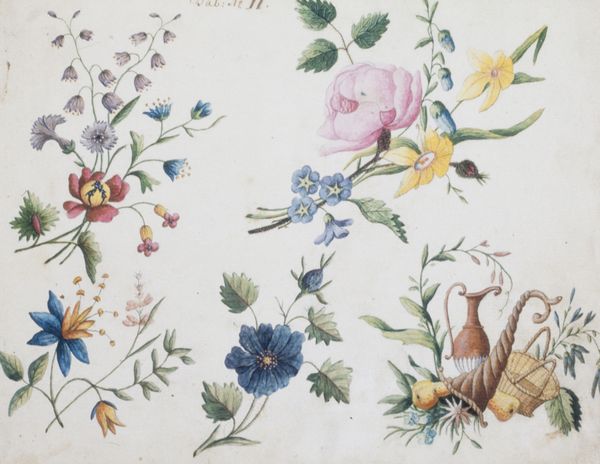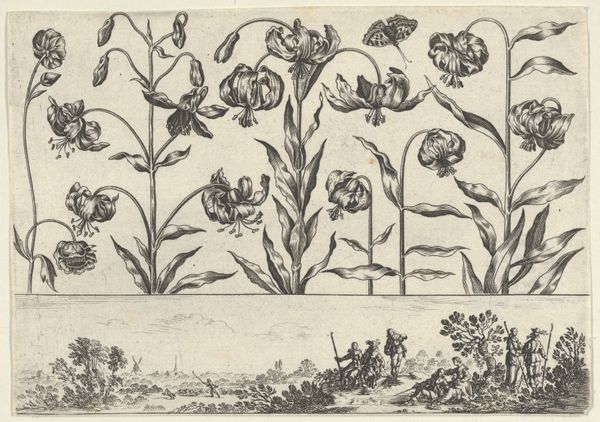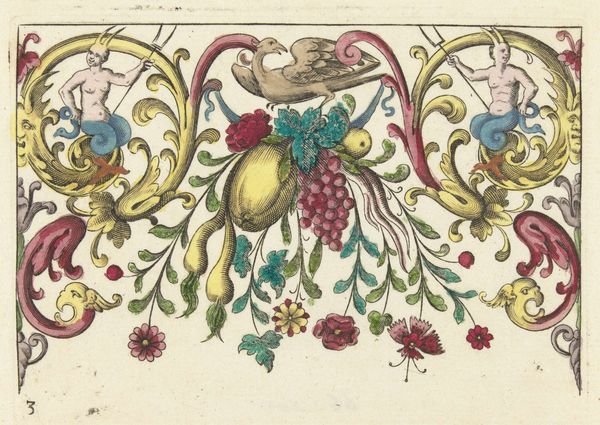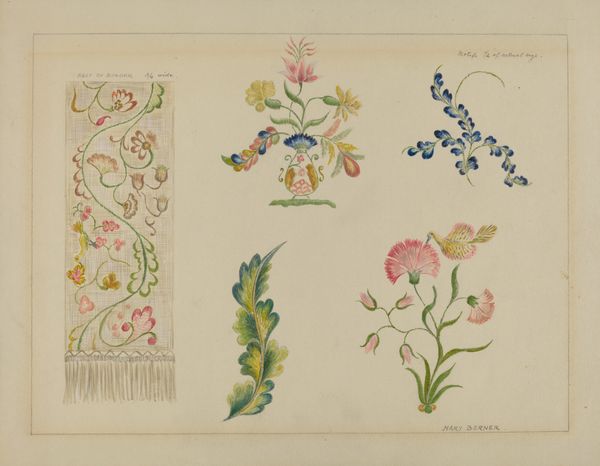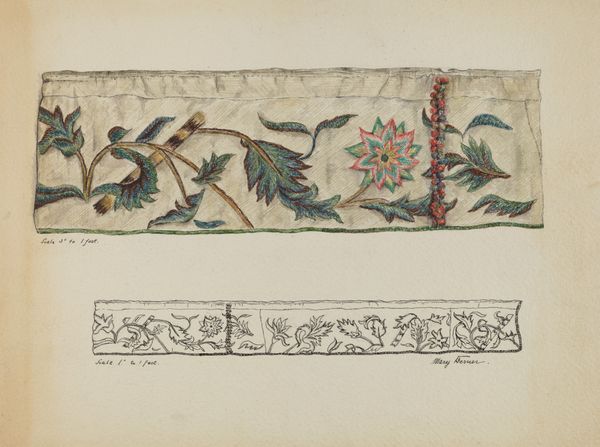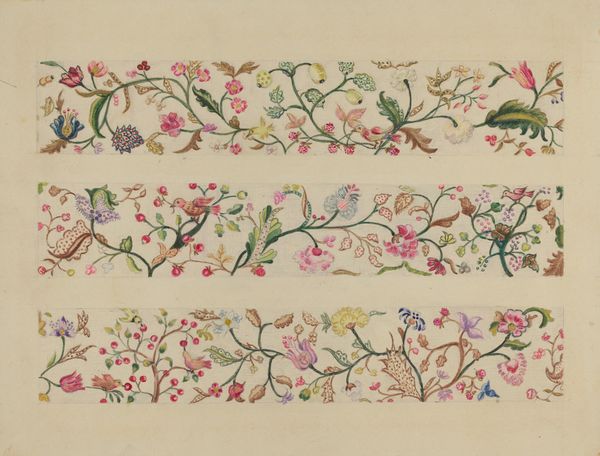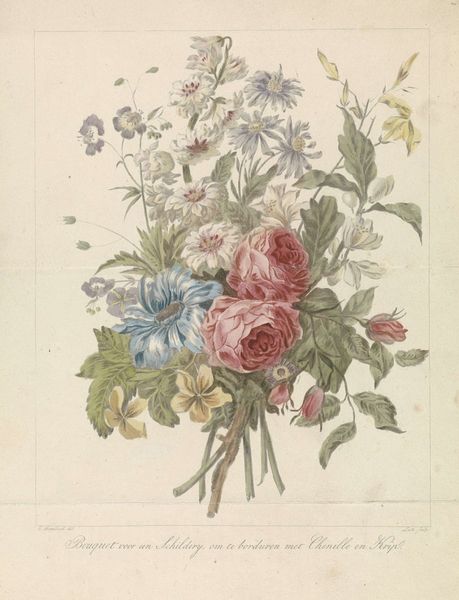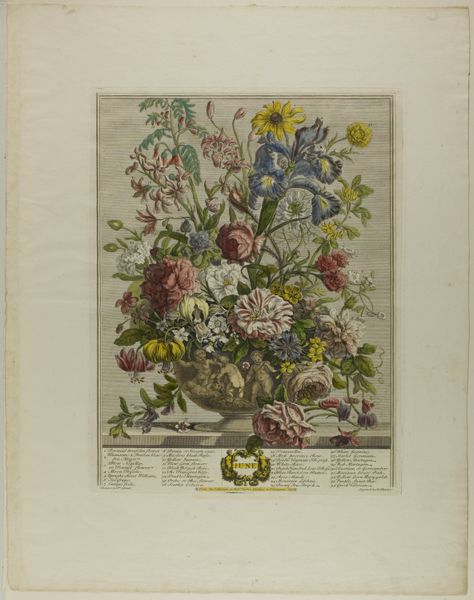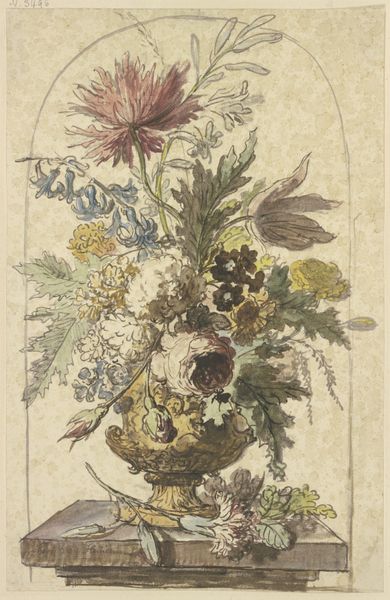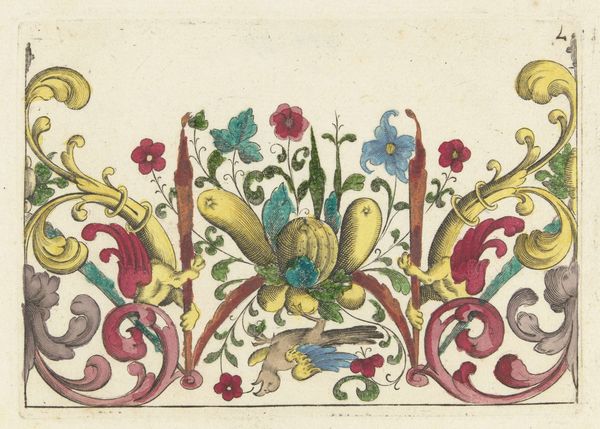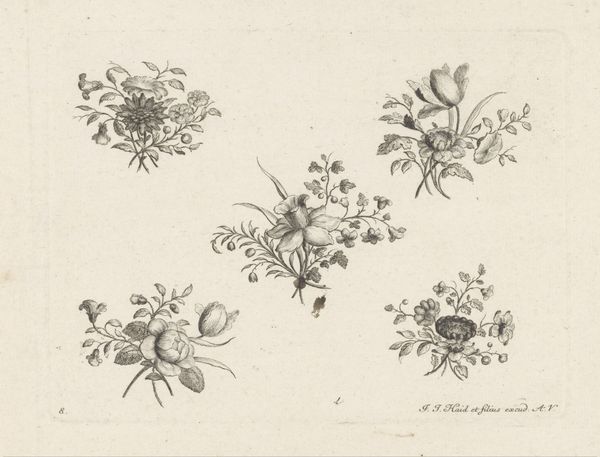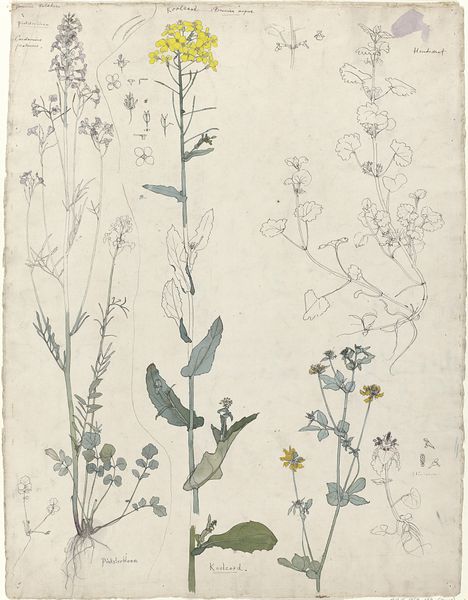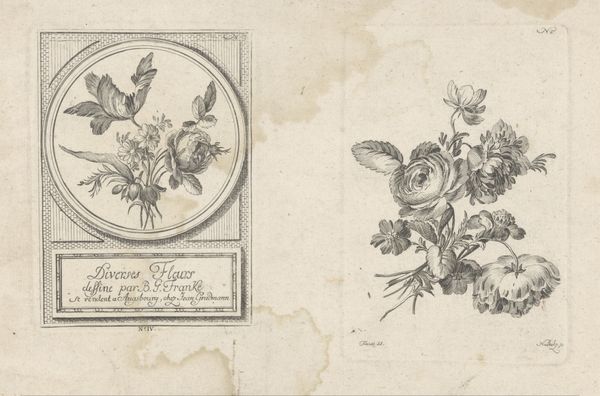
Ladies Amusement: Or, The Whole Art of Japanning Made Easy 1760
drawing, coloured-pencil, print, watercolor
drawing
toned paper
coloured-pencil
book
bird
flower
watercolor
coloured pencil
england
botanical drawing
orientalism
botanical art
watercolor
Dimensions: 7 7/8 x 12 5/16 x 1 3/16 in. (20 x 31.2 x 3 cm)
Copyright: Public Domain
Editor: This watercolor and coloured pencil drawing, "Ladies Amusement: Or, The Whole Art of Japanning Made Easy," created around 1760 by Jean Pillement, features an array of colourful flowers and birds, and strikes me as an attempt to capture an idyllic, almost fantastical oriental landscape. What can you tell me about it? Curator: Indeed! Look closer at these carefully rendered birds and botanicals. They are not just pretty decorations, but powerful conveyors of cultural memory. Pillement gives us his English version of 'Chinese subjects,’ designed for painting silks and 'japanning,’ but do these images ring true to Chinese sensibilities, do you think? Editor: I can see how they are probably filtered through a European lens, exaggerating certain exotic qualities. It feels less like an accurate depiction and more like a romanticized idea of the orient. Curator: Exactly. Think of the title, "Ladies Amusement." The art of japanning – imitation lacquer work – was seen as a genteel hobby for women in England. These motifs become accessible, palatable… domestic. The very act of copying these images served to create a different set of new meanings. Does that copying process affect the symbolism, do you think? Editor: It does. It almost feels like a souvenir – a tangible reminder of a culture experienced second-hand. A flattened cultural understanding. Curator: Precisely! These designs facilitated a dialogue – however one-sided – between cultures. They embody the visual shorthand used to evoke "the Orient" in the 18th century, shaped by trade, imagination, and perhaps a touch of appropriation. I encourage us all to look for the visual symbols and cultural references embedded within seemingly simple artworks. Editor: That's a great perspective. I’ll definitely think about art in terms of cultural exchange, and also who it’s made *for*.
Comments
No comments
Be the first to comment and join the conversation on the ultimate creative platform.
